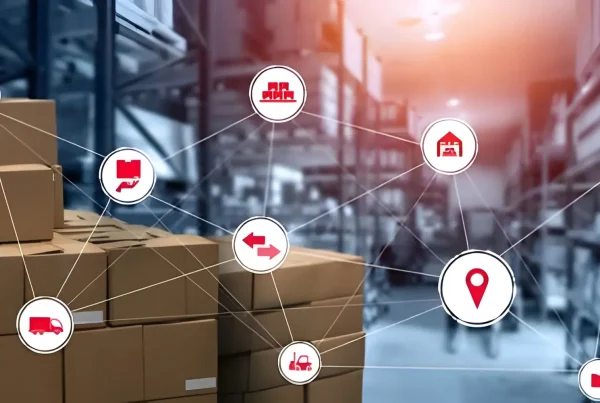Global inflation is squeezing the revenues and profits of retailers. Leading retailers are reporting the massive impact of stagflation on their operations, and they are continuing to see significant declines in their stock prices. US inflation marked 8.6% in May 2022; the highest recorded level in the last 40 years.
In 2021 retailers enjoyed a big boost in sales, some even beating pre-COVID levels. However, a bullwhip effect, combined with severe supply-demand disruptions, increasing commodity costs, and increased inflation has put retailers in a difficult position. Not only has demand been disrupted, but high manufacturing and transportation costs have placed a burden on their core profitability.
In order to cope with inflation and a looming fear of recession, some retailers are resorting to intense promotions to drive store traffic and ensure a steady flow of shoppers. These decisions look to be panic-driven, not data-backed, and lead to margin erosion. They also create a very tricky pricing and promotion environment for those retailers trying to find a balance between traffic and profitability.
Experts expect inflation to continue through the Fall and into next year. While central banks worldwide are increasing interest rates to tackle high demand and control future inflation, these initiatives will take significant time to show results.
Retailers need to move away from reactionary measures and instead build sustainable solutions to retain profitability and customers, and foster long-term growth. We have identified six key areas where decision-makers can focus their efforts to turn this difficult period into a strategic advantage relative to their competitors, and come out stronger than ever. While there is no one-size-fits-all solution, retailers can take several data-driven actions to win against inflation, and transform the way they do business:
- Understand inflation and its impact on your business: Before any of the more involved tactics, retailers must build a thorough understanding of what impact inflation has on their business. What is inflation’s impact on demand (by category, or even by class or SKU)? How will this impact unrelated classes? This can be complicated but is an absolutely critical requirement for tackling these issues. Ideally, you need to carefully track inflation and build your inflation forecasts into your demand forecasts.
- Re-evaluate your assortment to meet true consumer demand: In the current scenario, customers are increasingly turning brand agnostic and instead shopping with retailers who can keep up with their changing preferences. Retailers should leverage this situation by regularly reevaluating their assortment plans, and honing in on pockets of localized demand. Using intelligent assortment planning and superior demand forecasting, merchants can determine which product categories face the most inflationary pressures, and most are likely to be subjected to the greatest consumer demand shift. This can help retailers make informed inventory decisions, and deliver assortments that come closest to meeting consumer expectations.
- Data-driven lifecycle pricing: Rather than deploying broad-based price increases that may disrupt consumer trust and erode core value propositions, retailers can respond to inflation through AI-driven lifecycle pricing. When retailers implement intelligent pricing across their categories, they are able to analyze customers and product segments, taking into consideration both margin performance and consumers’ willingness to pay. This can mean sharper reductions on some products and more limited or no changes to others. Miscalculation of promotions, omnichannel pricing, and markdowns, especially done with too broad a brush, can leave money on the table. Retailers that take a surgical approach and embrace an ML-based lifecycle pricing strategy are more likely to maximize profitability and improve customer experience.
- Reset Promotional Strategies: Most trade promotions are inefficient because they are based on “gut feelings” and prior experience. That experience is invaluable, but often ineffective when up against unprecedented situations as we have seen over the past two years. Human judgment is often biased one way or the other leading to under or over-correction. Inflationary times offer a fantastic opportunity to reset promotional strategies to save costs and drive margin growth, both in difficult times like we are facing now, but just as much in more traditional economic cycles. AI and ML provide retailers with the means to acquire an accurate picture of their baseline demand, even in turbulent periods, taking into account inventory levels, sales velocity, price elasticity of demand for each product and category, and much more.
- Benchmarking against competitor pricing: In the past, it was sufficient to understand price elasticities and identify KVCs and KVIs. But in this ever more complicated retail world, that is no longer sufficient. We have helped our clients develop store clusters and other localized strategies necessary for price, promotion, and markdown optimization. You will also want to carefully track competitive promotional intensity This has proven to be a key input for promotion strategies, and will become even more critical heading into the holiday timeframe.
- Optimized allocation for maximum returns: The ripple effect of effective pre-season and in-season allocation minimizes several rising challenges by stocking the right product, in the right amount, in each location. Additionally, replenishment is an often overlooked opportunity to fine-tune assortments and closely manage stockouts. AI and ML solutions can be implemented across millions of product and location combinations, taking into account real-time sales and return data points, and adjusting to ensure in-season error reduction. With effective allocation and replenishment decisions, retailers find they can easily improve both profit margins and sell-through.
The retail environment is likely to remain challenging for some time during the ongoing inflationary pressures, but the situation also presents an opportunity for retailers to develop a quick response through data-driven decision-making. Many retailers are adopting AI and ML-based merchandising. Understanding that inflation is just one disruption in an ever-evolving retail landscape will allow retailers to stay nimble across their merchandising operations and value chain. The future will belong to those who can use their resources to redefine their business and grow profits using actionable insights.
How can Impact Analytics help?
IA’s robust predictive analytics can take into account millions of data points across myriad variables such as seasonality, trends, inflationary pressures, price elasticity, supply chain challenges, customer demand patterns, and many more, to provide actionable insights around assortment, allocation, pricing, and overall financial planning. Combining technology innovations—such as big data analytics and ML-based algorithms, IA also provides superior demand forecasting to tackle shifts in consumer demand patterns and rising inflation.
Whether you chose to just follow our advanced tracking indexes for inflation and promotions, or you are looking to speed up your time to act against a specific opportunity like holiday pricing and promotion, or you want to opt for an end-to-end merchandising suite to drive profits across your retail value chain, Impact Analytics is here to help address your needs. Please reach out to schedule a conversion to hear more about how we might be able to help.





